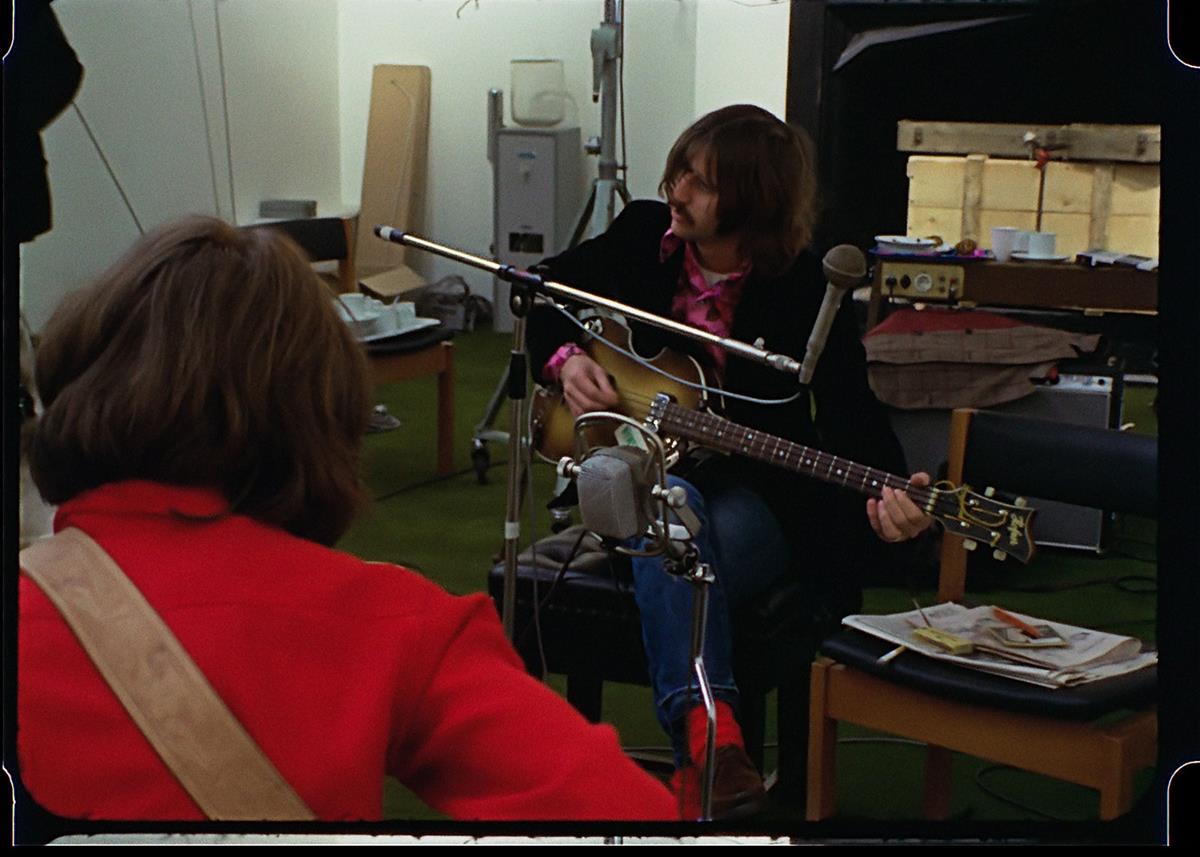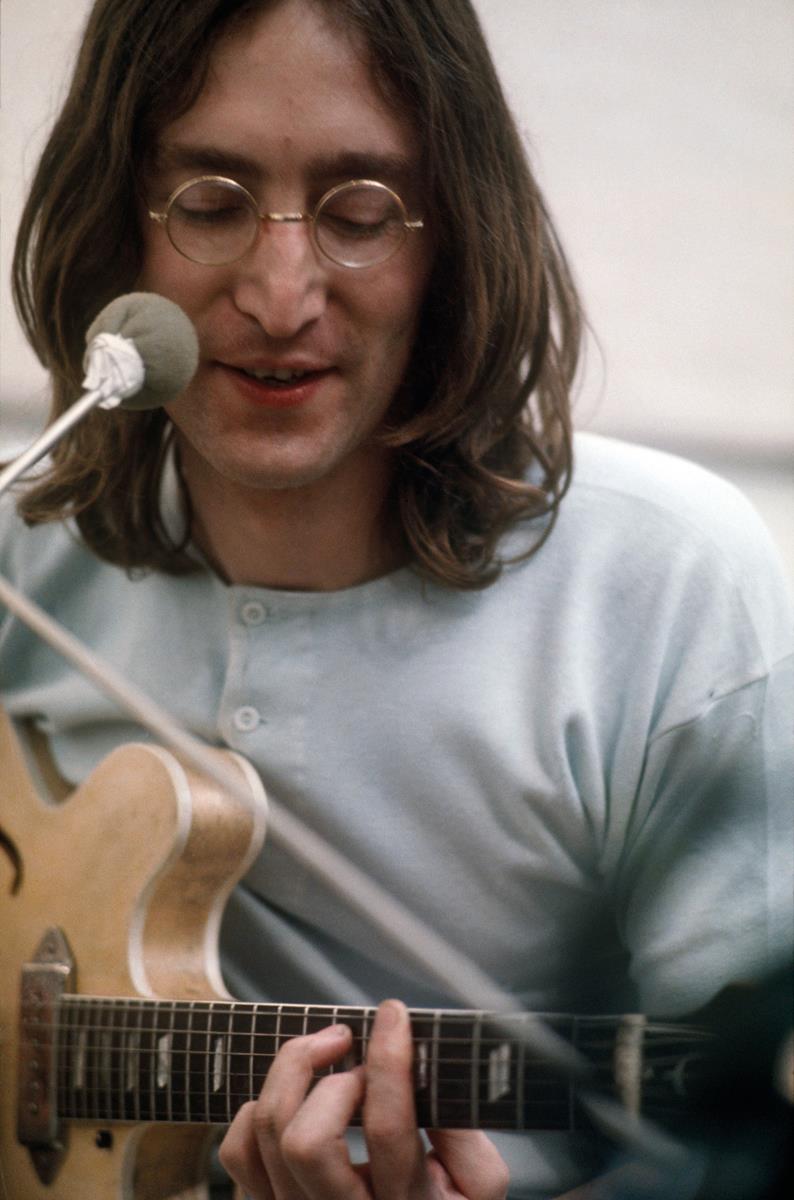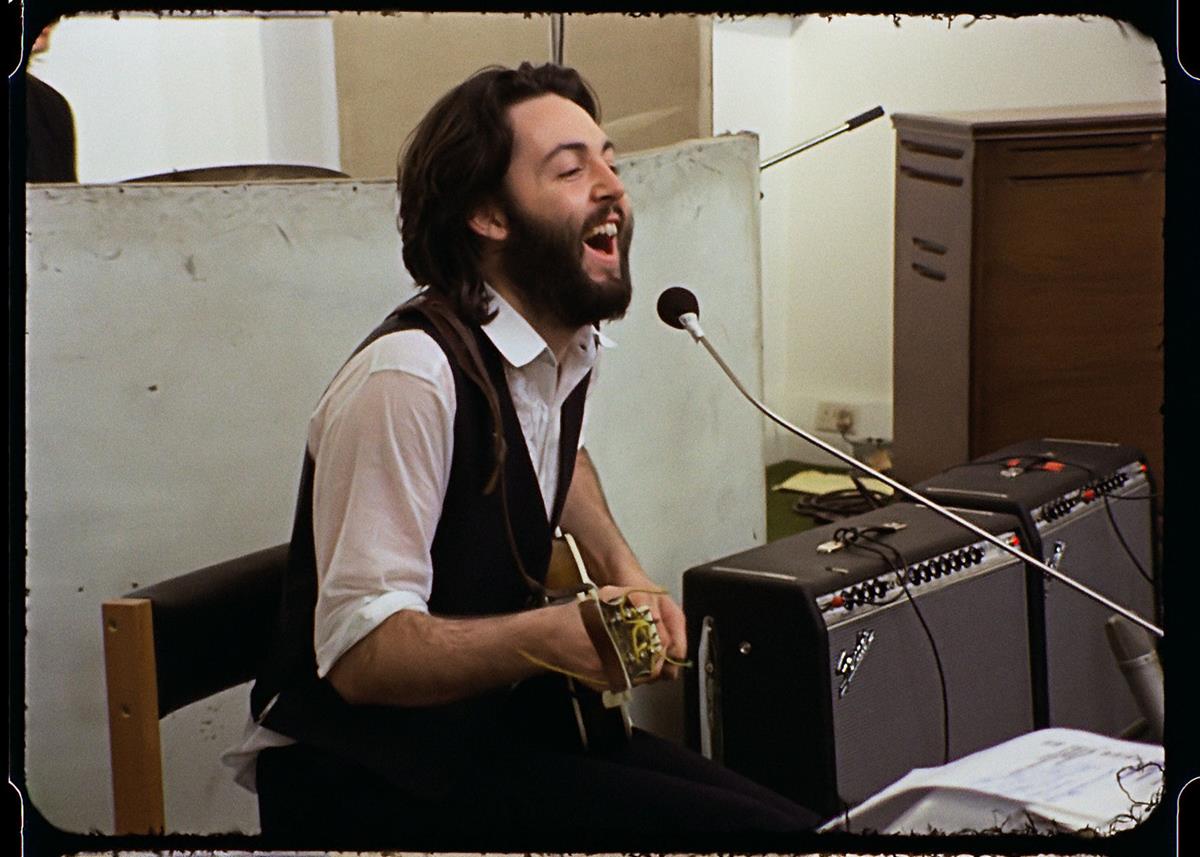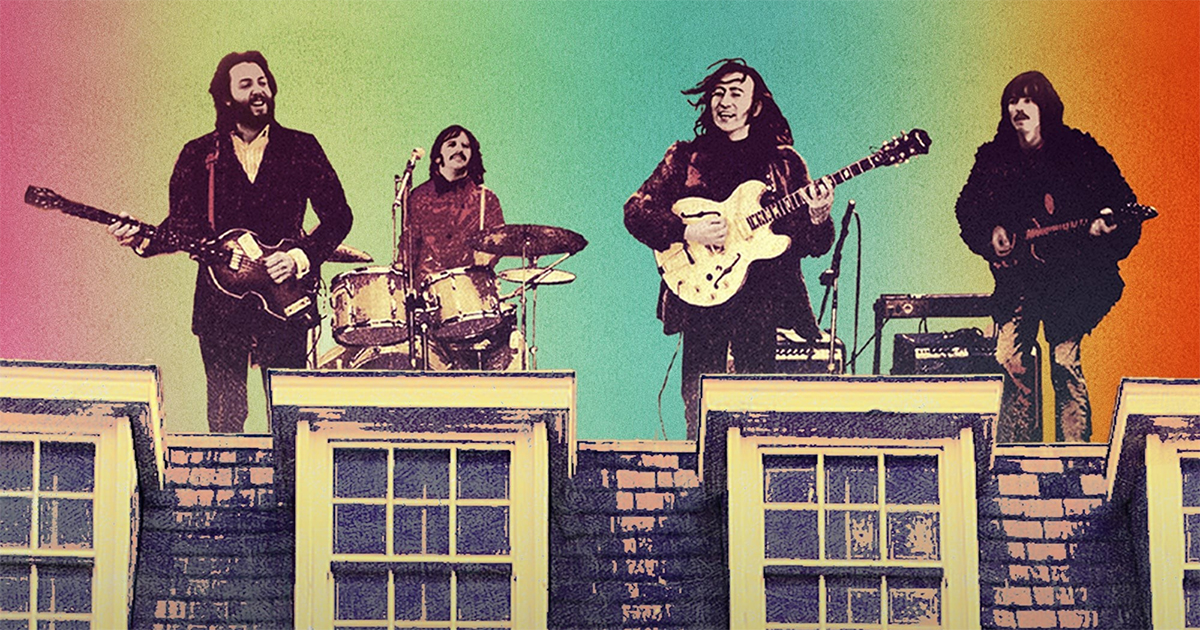
Peter Jackson’s long-awaited documentary, The Beatles: Get Back, arrived on Disney+ on November 25, 26 and 27, Greg Evans reports in Deadline. The three-part docuseries takes audiences back in time to the band’s intimate recording sessions during a pivotal moment in their history.
Initially set for theatrical release in late August, The Beatles: Get Back was originally conceived as a feature-length documentary, according to IndieWire’s Zack Sharf. “Disney+ has now announced the documentary is moving to Thanksgiving and expanding into a three-part series,” he writes.
“I think people will be surprised by the series for two reasons,” Jackson told Sharf. “One, it’ll be far more intimate than they imagined it to be, because everyone is used to seeing music documentaries being a bit kind of MTV-ish, sort of together in a poppy kind of way and it’s just the music, music, music, you know? The music isn’t at the forefront of this film: weirdly, it’s what goes on behind the music at the forefront.”
READ MORE: Peter Jackson Says ‘Music Isn’t at the Forefront’ of Six-Hour Beatles Doc: More Talking Than Singing (IndieWire)
“Jackson spent three years restoring and editing some 60 hours of footage shot in January 1969 by [Let It Be director] Michael Lindsay-Hogg that hasn’t been seen before, and more than 150 hours of previously unheard audio,” Kim Lyons notes in The Verge. “It captures John Lennon, Paul McCartney, George Harrison, and Ringo Starr preparing for their first live show in more than two years, writing and rehearsing 14 new songs.”

The only person in 50 years to have been given access to these private film archives, Jackson found the unseen and unheard material to be revelatory. “In many respects, Michael Lindsay-Hogg’s remarkable footage captured multiple storylines,” the filmmaker said in a statement:
“The story of friends and of individuals. It is the story of human frailties and of a divine partnership. It is a detailed account of the creative process, with the crafting of iconic songs under pressure, set amid the social climate of early 1969. But it’s not nostalgia — it’s raw, honest, and human. Over six hours, you’ll get to know The Beatles with an intimacy that you never thought possible.”
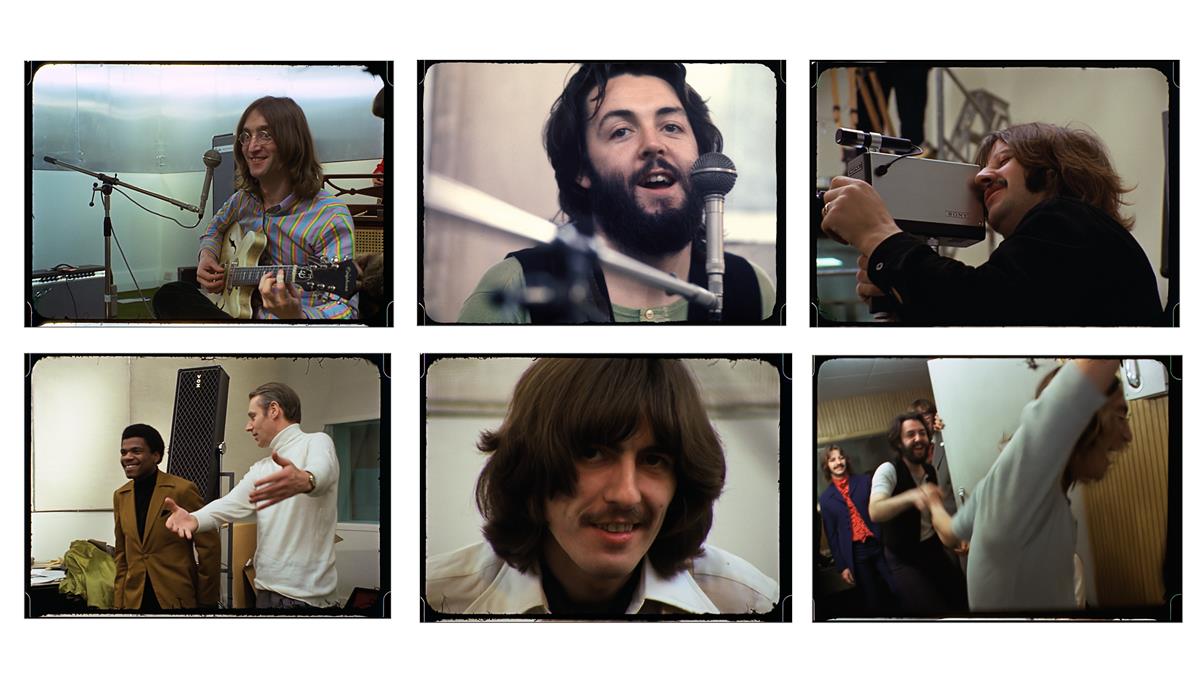
READ MORE: Peter Jackson’s ‘The Beatles: Get Back’ Six-Hour Doc Set For Three-Day Thanksgiving Debut On Disney+ (Deadline)
READ MORE: A Peter Jackson-directed documentary about The Beatles will debut on Disney Plus in November (The Verge)
READ MORE: Peter Jackson Restored So Much Beatles Footage That ‘Get Back’ Is Now a Six-Hour TV Series (IndieWire)
The world had its first taste of Get Back late last year, in a nearly six-minute video montage featuring highlights from the archival materials. Jackson himself introduced the video, noting that he was roughly halfway through the edit on what at the time was meant to be a feature-length project:
“So, what you’re going to see is, it’s not a trailer, those will be coming out next year. It’s not a sequence from the film. It’s like a montage of moments, that we’ve pulled from throughout the 56 hours of footage, that we have. It just gives you a sense of the spirit of the film that we’re making, so let’s have a look at that. Hopefully, it’ll put a smile on your face, in these rather bleak times, that we’re in the moment.”
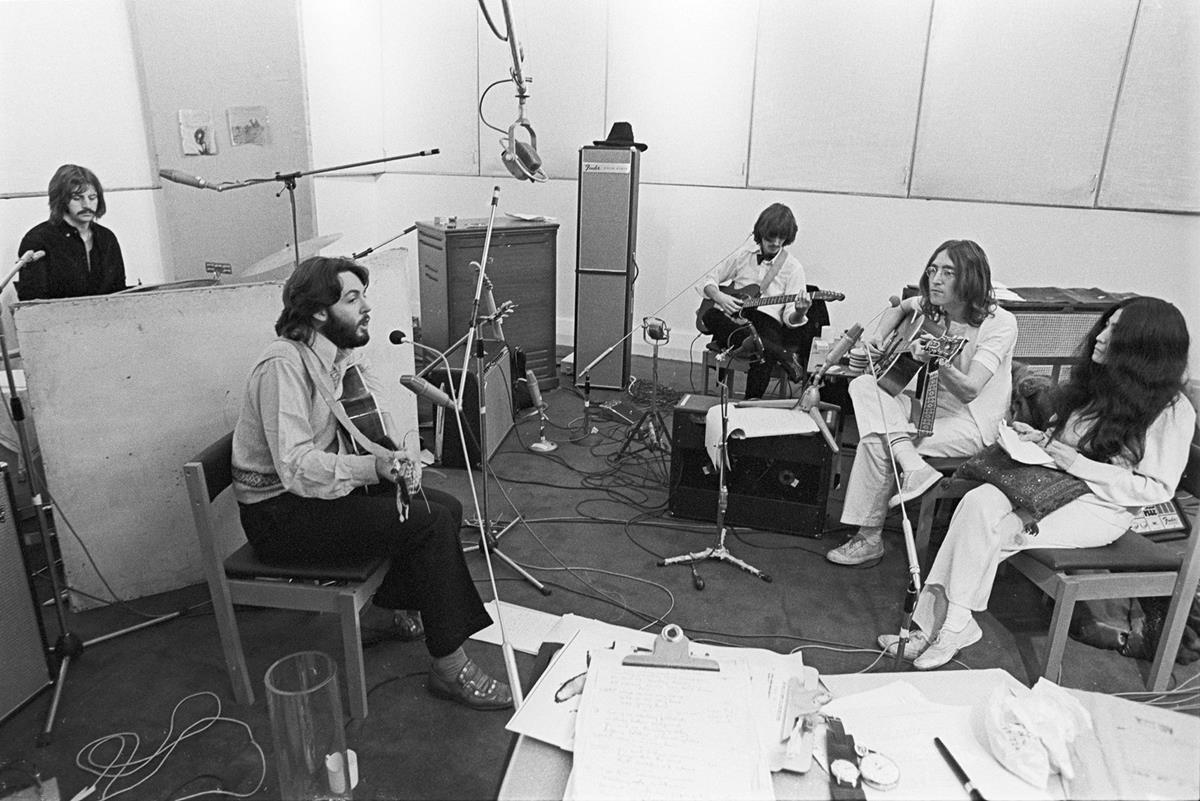
Variety senior music editor Jem Aswad calls Get Back “a counter-narrative to the glum Let It Be, an alternate history that makes you question what you thought about the original.”
With sound and visuals “approximately three times as bright” as the original 1970 film, “the audio is cleaner, and it’s much lighter and more pastel-colored than the murky browns and blacks of Let It Be. But most remarkably, the mood is three times brighter as well,” he remarks.
The Beatles are in the same 1969 setting as Let It Be, Aswad notes, but now they’re “clowning around, dancing, doing impersonations, embracing, laughing… and almost never not smiling.” He also comments on the “lively supporting cast,” including longtime producer George Martin, “and even a moment where we see the purported wife-rivals Yoko Ono and Linda McCartney laughing together. We see Paul cuddling with his step-daughter Heather, John and Ringo walking with their arms around each other — a family.”
Aswad also asks how all of this incredible footage didn’t make it into the original film. “Maybe the original Let It Be was a narrative of its own,” he muses, “and Get Back is the counter-narrative. And as in life, they’re both true.”
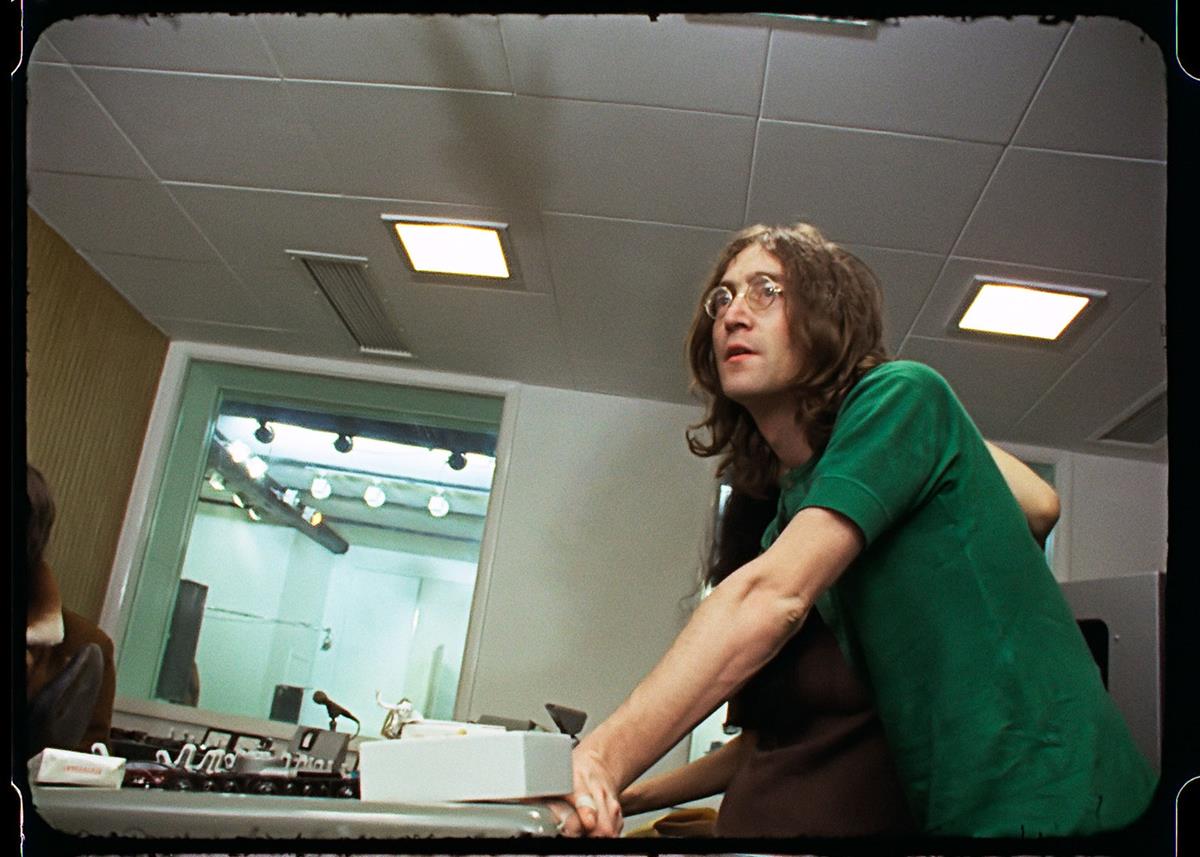
READ MORE: The Beatles’ ‘Get Back’ Preview: Peter Jackson Rewrites the Ending of Rock’s Greatest Fairy Tale (Variety)
“Jackson’s film isn’t just a delicious peek at lost footage (though it is that),” Joe Hagan writes at Vanity Fair. “It’s an amendment to the received history.”
Hagan was given an exclusive look at 43 minutes of footage from the documentary series, as well as a lengthy interview with Jackson about the project.
“Though Get Back is made for modern eyes decades after the events themselves, it’s faithful to the intent of the original, which was to chronicle the band’s return to live performance after they ceased playing concerts in 1966,” Hagan comments.
Let It Be had been intended as a TV series with taped performances of new Beatles songs performed before a small audience. But after Harrison walked out of Twickenham Studios following arguments with McCartney, that “little episode,” as Lindsay-Hogg calls it, was blown up to represent acrimony between Harrison and McCartney and underlying severe tension. “And in fact, it’s just a small little cloud which passes over their working relationship in five minutes,” Lindsay-Hogg recalled. “That’s all it was.”
However, the “little episode” caused a major pivot in the production, Hagan notes, and the television project was reshaped into a feature film in order to fulfil a three-picture deal Beatles manager Brian Epstein had made with United Artists before his death, in 1967. Let It Be was released in May of 1970, just one month after the Beatles had split up, and the rest, as they say, is history.

Jackson chose not to exclude the “little episode” that led to Let It Be — a brief but tense scene where McCartney soothes a wounded Harrison after criticizing his guitar parts — but he decided that he would also show its aftermath, making Get Back more revealing, not less.
For his own project, Jackson decided that when Harrison and McCartney begin fighting—a brief but tense scene in which McCartney placates a wounded Harrison after criticizing his guitar parts—he would show not only that but the aftermath as well. Consequently, Jackson says, Get Back will be more revealing than the original, not less. “It’s a lot tougher movie than Let It Be,” Jackson told Hagan. “I mean, Let It Be couldn’t show George leaving the group, which he did on the seventh day, and then he obviously came back again. Let It Be never showed that.”
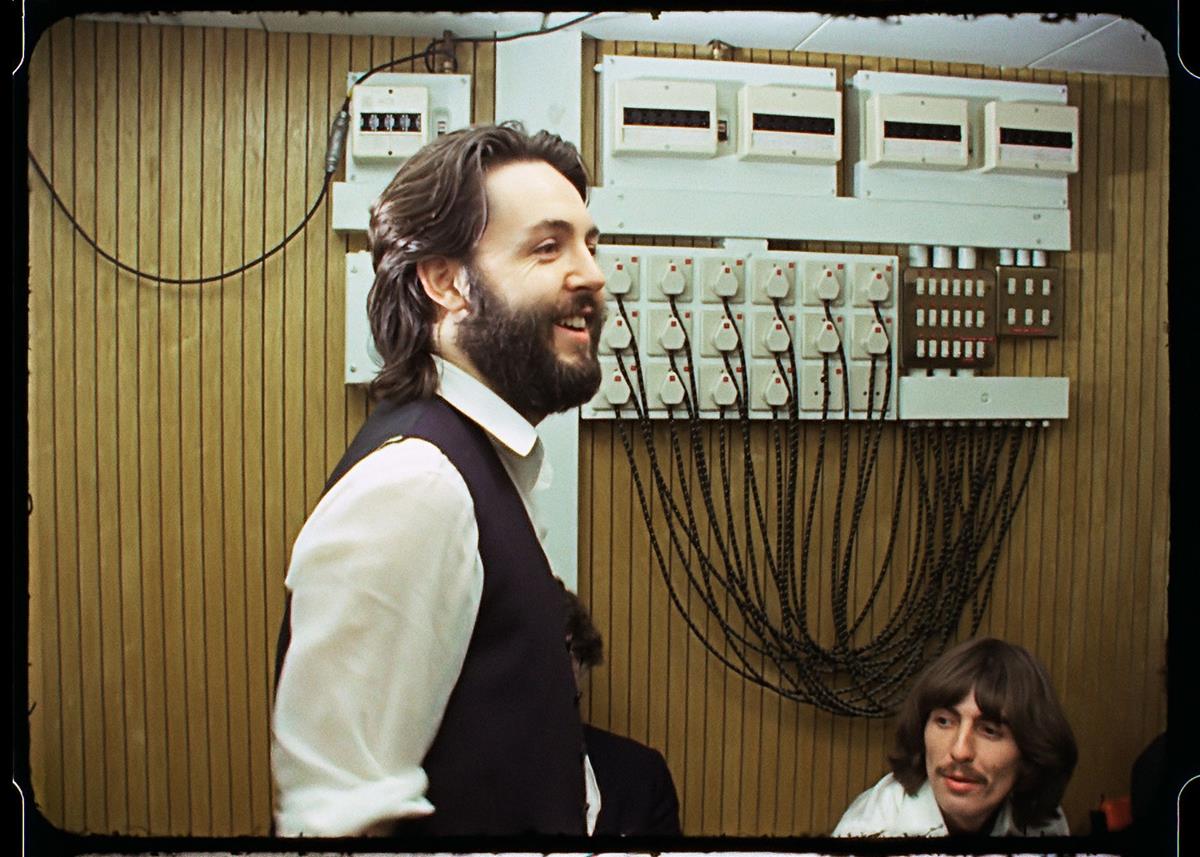
“Jackson says he didn’t need to manipulate Lindsay-Hogg’s original footage — or include talking heads to contextualize things — to create a dramatic plot,” Hagan recounts. “The sessions formed their own story, and Get Back, he decided, could simply be a ‘documentary about the documentary.’”
For Jackson, the “little episode” was a perfect opportunity in terms of story structure. “If this was a fictional movie about a fictional band, having one of the band members walk out at the end of the first act—it’d be the ideal thing that you’d actually write into a script,” he says. “So, weirdly enough, these guys are playing out their real life. They were not playing it out [as] a movie or a script — that was the truth of their life. And yet, somehow, in terms of these 21 days, it kind of weirdly fits it. And then the triumphant third act where, against all odds, they’re up on the roof, playing — fantastic.”
Jackson met with Lindsay-Hogg in Los Angeles in 2020 to show him the restored footage. “He showed me a comparison of my Let It Be’s footage and his stuff,” said Lindsay-Hogg, including how McCartney’s hair appeared as a single block of color in the original and “now you can see every single strand of hair.”
In what Hagan calls “a decisive and crucial creative act,” Jackson avoided repeating footage from the original Let It Be, employing alternative camera angles even for familiar scenes:
“One of our mantras is that Let It Be is one movie, and our movie is a different movie, and we’re trying not to repeat any footage, with one or two tiny exceptions where we can’t do anything else. But we’re trying to not step on Let It Be’s toes so that it is still a film that has a reason to exist, and our movie will be a supplement to it.”
READ MORE: The Beatles: Get Back—An Exclusive Deep Dive Into Peter Jackson’s Revelatory New Movie (Vanity Fair)
Jackson discussed Let It Be’s reputation as a “joyless document” of the collapse of The Beatles in an interview with Ben Sisario, music writer at The New York Times, explaining how Get Back tries to fill in some of the gaps left by the first film.
“Everyone sort of thinks it’s a ‘whitewash’ because the Beatles have authorized the film. But actually it’s almost the exact opposite. It shows everything that Michael Lindsay-Hogg could not show in 1970. It’s a very unflinching look at what goes on,” he said.
“Our movie doesn’t show the breaking up of the Beatles, but it shows the one singular moment in history that you could possibly say was the beginning of the end,” he added.
NOT WHODUNNIT, BUT HOW-DUNNIT — DIGGING INTO DOCUMENTARIES:
Documentary filmmakers are unleashing cutting-edge technologies such as artificial intelligence and virtual reality to bring their projects to life. Gain insights into the making of these groundbreaking projects with these articles extracted from the NAB Amplify archives:
- Crossing the Line: How the “Roadrunner” Documentary Created an Ethics Firestorm
- I’ll Be Your Mirror: Reflection and Refraction in “The Velvet Underground”
- “Navalny:” When Your Documentary Ends Up As a Spy Thriller
- Restored and Reborn: “Summer of Soul (…Or, When the Revolution Could Not Be Televised)”
- “Billie Eilish: The World’s a Little Blurry:” When/How Documentarians Get Up Close and Personal
“There’s no goodies in it, there’s no baddies. There’s no villains, there’s no heroes. It’s just a human story.”
READ MORE: Know How the Beatles Ended? Peter Jackson May Change Your Mind. (The New York Times)

But not everyone is necessarily excited about the upcoming series. Variety chief film critic Owen Gleiberman — a self-described Beatles fanatic — questioned the need for a six-hour look back at the Beatles. “So here’s a question,” he writes. “Since we just learned that we’re about to get more of the Beatles, why, in my heart and gut, does it feel like less?”
Although there have been several attempts to re-release it, Let It Be hasn’t been available to watch in recent years, “but it has a place in film history,” Gleiberman explains:
“It’s a scraggly elegy, capturing a certain wistful moment of reckoning that’s part of the Beatles’ story. From the start, though, the premise of Peter Jackson’s Get Back has been that the 50 hours of footage originally shot in 1969 by director Michael Lindsay-Hogg actually tells a different story: a more complex and upbeat one. As any Beatles fan knows, the aura that surrounds Let It Be is a kind of mythology. The film showed the Beatles near the end, and it was released after the group had broken up (so it felt like we were seeing them ‘together for the last time’), but, in fact, after the Get Back sessions went south, the Beatles went back into the studio to record ‘Abbey Road,’ an album as pristinely gorgeous in its joy as Let It Be was knowingly ramshackle in its melancholy.”
Gleiberman hopes that Jackson will be provide a more intimate, and revealing, portrait of the Beatles during that time, “one that adds to the group’s mystique,” he says:
“And that’s why The Beatles: Get Back is — or was — a movie I dreamed of seeing in theaters. Today, most music documentaries are streaming only, but the Beatles remain larger-than-life. They turned the entire world into a community, and still have the power to turn an audience into a congregation. If the Beatles aren’t worthy of the big screen, I don’t know who is.”
READ MORE: ‘The Beatles: Get Back’ Is Now a Six-Hour Mini-Series. So Why Does It Feel Like More Might Be Less? (Variety)
Independent’s Ed Cumming notes that while Jackson didn’t want to use any of the same footage from Let It Be, there was still plenty of material to plumb. His approach was to let the archival footage speak for itself. Where other filmmakers might have decided to “cut the footage more dramatically or impose a stronger sense of [their] own narrative on things… Jackson is content to keep a gentle hand on the tiller.”
In Get Back, conversations run on, and the viewer is pulled into these intimate moments between the band. “A common complaint of cultural documentaries is that you don’t get to see the magic happen,” says Cummings. “Well, here it is, two-and-a-half geniuses and Ringo Starr sitting in a room, snapping at each other and still coming up with songs that mean something to everyone you know.”
READ MORE: The Beatles – Get Back review: Peter Jackson documentary is a seven-hour masterpiece (The Independent)
Jackson acknowledged the enormous stakes of taking on a landmark project like Get Back in an interview with Ed Symkus for the Boston Globe. “There was pressure on me the whole time,” he said.
“One of the things that I, as a fan, know very well about the Beatles is that they never wanted to release a project that was substandard. I was very much aware that it had to be as good as it could possibly be,” he continued. “This wasn’t a guy making just another documentary out of stock footage from Reuters or Pathé, without the Beatles’ approval. This is an official Beatles project that I’m shepherding. It wasn’t anything they told me. They didn’t put this pressure on me. I just knew, as a Beatles fan, that, boy, the Beatles never shortchanged anybody. They always delivered the goods, they always delivered something great. And that’s what I had to do.”
READ MORE: Peter Jackson on directing ‘The Beatles: Get Back,’ and getting way, way back (Boston Globe)
Want more? Check out this clip from The Beatles: Get Back, featuring restored, never-before-seen footage of the band practicing “I’ve Got a Feeling.” The clip provides a tiny glimpse into the group’s creative process, as well as the relationship between the fab four:
In an interview with 60 Minutes, Jackson describes how he crafted the narrative arc of his new Beatles documentary, Get Back, and explains the technical process for restoring footage:
In the video below, Jackson tells Newshub entertainment editor Kate Rodger how the production team was able to isolate voices in the restored footage.
“When the footage was being filmed, the musicians weren’t keen on having everything they said recorded, so much so that at times they’d play an instrument at the same time to try and hide what they were saying,” Jackson said.
“With this technology we’ve got, we can strip away the guitar and reveal these hidden conversations that they didn’t want anyone to hear.”
Ahead of the release of The Beatles: Get Back on Disney+, John Harris, editor of the new book of the same name, takes viewers on a delightful journey through London to three key locations from the making of the Let It Be album:
Want more? Hosted by award-winning author Robert Rodriguez, the Something About The Beatles podcast is an intelligent but entertaining examination of The Beatles’ music and career. Spanning three episodes, Rodriguez takes an in-depth look at the making of The Beatles: Get Back:
You can also watch Jackson discuss what it was like to be entrusted with more than 60 hours of Beatles footage to make the new documentary series on Marc Maron’s WTF podcast:


